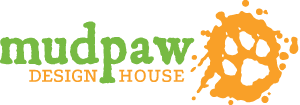Saving on design costs doesn’t mean you have to compromise on quality or creativity. For small business owners looking to create an impressive marketing toolkit without breaking the bank, a little ingenuity goes a long way. Have you ever thought about how working with designers can be more cost-effective? By taking a few steps to prepare your own content, like sourcing high-quality images or drafting a basic layout, you can make design collaboration smoother and more affordable. These budget design tips not only help you save on design costs but also ensure your promotional materials truly reflect your brand’s vision. Ready to explore more ways to keep costs down while working with designers? Let’s get started!
Budget Design Tips
Let’s start with some practical ways to keep your design costs in check without sacrificing quality. These tips will help you make the most of your budget while working with designers.
Provide Your Own Content
Creating your own content can significantly reduce design costs. It allows designers to focus on their expertise while you contribute valuable insights about your business.
Start by writing clear, concise copy for your marketing materials. This includes headlines, body text, and calls-to-action. Your unique voice and knowledge of your business will shine through.
Next, gather relevant data and statistics that support your message. This information can be transformed into eye-catching infographics or charts by your designer.
Lastly, outline the key points you want to convey in your marketing materials. This gives your designer a solid foundation to work from, streamlining the design process and potentially reducing revisions.
Source High-Quality Images
Finding the right images for your marketing materials can be a game-changer in both cost and impact. High-quality visuals can elevate your design without breaking the bank.
Consider using stock photo websites that offer free or low-cost options. Sites like Unsplash, Pexels, or Pixabay provide a wide range of professional-looking images that can suit various business needs.
If possible, invest in some professional photography of your products, team, or workspace. These unique images can set you apart from competitors and provide a personal touch to your marketing materials.
Remember to always check licensing requirements and attribution guidelines when using images from any source. This small step can save you from potential legal issues down the line.
Effective Design Collaboration
Working well with your designer is key to getting the best results while keeping costs down. Let’s explore how to make this collaboration smooth and productive.
Clear Vision Communication
Communicating your vision clearly to your designer can save time, money, and potential frustration. It’s all about being specific and providing the right information upfront.
Start by creating a mood board that represents the style, colors, and overall feel you want for your design. This visual reference can be a powerful tool in aligning your vision with the designer’s work.
Write down a clear brief that outlines your objectives, target audience, and any specific requirements. The more detailed you can be, the fewer revisions you’ll likely need later.
Don’t hesitate to share examples of designs you like, explaining what specifically appeals to you about each one. This gives your designer concrete references to work from.
Remember, open and honest communication throughout the process is crucial. If something isn’t working, speak up early to avoid costly changes later in the project.
Basic Layout Contribution
Contributing a basic layout can give your designer a head start and potentially reduce the time needed for the project. This doesn’t mean you need to be a design expert – even a rough sketch can be helpful.
Start by drawing a simple wireframe of how you envision the layout. This can be done on paper or using basic digital tools. Focus on the placement of key elements like headers, images, and text blocks.
Next, consider the hierarchy of information. What’s the most important message? Where should it be placed for maximum impact? Communicate these priorities to your designer.
Remember, this is just a starting point. Your designer will use their expertise to refine and improve upon your initial ideas, creating a polished final product.
Cost-Effective Marketing Tips
Smart marketing strategies can help you maximize the impact of your design investment. Let’s look at some ways to get more bang for your buck.
Gather Customer Testimonials
Customer testimonials are powerful marketing tools that can boost your credibility without inflating your budget. They provide social proof and can influence potential customers’ decisions.
Start by reaching out to satisfied customers and asking for their feedback. Be specific in your request – ask them to comment on particular aspects of your product or service that they found valuable.
When you receive testimonials, select the most impactful ones to feature in your marketing materials. Look for testimonials that address common customer concerns or highlight your unique selling points.
Consider using different formats for your testimonials. Written quotes work well in print materials, while video testimonials can be powerful on your website or social media channels.
Remember to always get permission before using a customer’s name or image in your marketing materials. This shows respect for your customers and keeps you legally compliant.
Build a Cohesive Marketing Toolkit
Creating a cohesive marketing toolkit ensures consistency across all your materials, reinforcing your brand identity and maximizing the impact of your design investment.
Start by defining your brand guidelines. This includes your logo usage, color palette, typography, and overall visual style. Having these elements clearly defined will save time and money in future design projects.
Next, create templates for common marketing materials like business cards, letterheads, and social media posts. These templates can be easily customized for different needs, reducing the need for frequent designer interventions.
Consider developing a brand style guide that outlines how to use your visual elements and voice across different platforms. This guide can be invaluable for maintaining consistency, especially if you work with multiple team members or external partners.
Remember, a cohesive toolkit doesn’t mean everything looks identical. It’s about creating a recognizable brand identity that can be flexibly applied across various marketing channels and materials.


